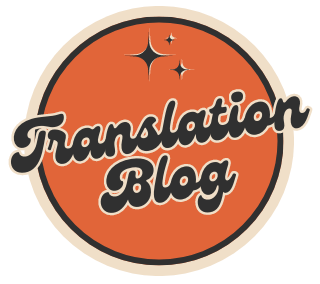Translation courses require precision, attention to detail, and the ability to juggle complex concepts across languages. Staying focused during these courses is crucial to absorbing knowledge and honing your skills, but distractions and challenges can make it harder than it seems. Whether you’re just starting out or looking to sharpen your expertise, adopting effective strategies to boost your focus can transform your learning experience. Let’s explore practical tips to help you stay engaged and maximize your translation course this year.
7 Ways To Focus Better During A Translation Course This Year
Create a dedicated study space free from distractions
Creating a dedicated study space free from distractions is essential for staying focused during a translation course. This space should be quiet, organized, and tailored to your needs, ensuring you can concentrate fully on the material.
Remove clutter and distractions like unnecessary electronics or unrelated items, and ensure the area is well-lit and comfortable. A consistent spot for studying helps establish a routine, signaling your brain that it’s time to focus. A distraction-free environment allows you to absorb information more effectively and stay engaged throughout your course.

Break study sessions into manageable time blocks
Breaking study sessions into manageable time blocks is a highly effective way to maintain focus during a translation course. Instead of attempting long, uninterrupted sessions, divide your study time into smaller chunks, such as 25- or 30-minute intervals, with short breaks.
This approach, often called the Pomodoro Technique, helps prevent fatigue and keeps your mind sharp. Shorter sessions also make it easier to tackle complex material in smaller, more digestible pieces, allowing you to stay productive without feeling overwhelmed. This structured method enhances both focus and retention throughout your learning process.
Use active listening techniques during lessons
Active listening techniques during lessons are a powerful way to improve focus during a translation course. This involves fully engaging with the material by maintaining eye contact with the instructor, taking notes, and asking clarifying questions when needed. Instead of passively hearing the information, active listening helps you process and retain it more effectively.
Techniques like summarizing key points or mentally repeating important concepts ensure you stay present and connected to the lesson. By actively participating, you enhance your understanding and make the learning experience more interactive and engaging.
Practice mindfulness or meditation
Practicing mindfulness or meditation can significantly improve focus during a translation course by helping you stay present and calm amidst learning demands. Taking a few minutes before your study sessions to meditate or practice deep breathing allows you to clear your mind and approach your work more clearly.
Mindfulness techniques, such as focusing on your breath or observing your thoughts without judgment, can also be applied during study breaks to reset your concentration. These practices create a mental space where you can fully engage with your coursework and manage distractions more effectively. For an extra boost in relaxation and clarity, many students turn to Delta Munchies HHC products, which are crafted to support calm focus and help ease study-related stress.
Set clear goals for each session
Setting clear goals for each session is an effective way to stay focused during a translation course. Before you begin, outline specific tasks you want to accomplish, such as mastering a particular grammar rule, completing a set of vocabulary exercises, or translating a specific text.
Clear objectives direct your study time and help you measure progress, which keeps you motivated. Breaking larger goals into smaller, achievable steps allows you to tackle your coursework purposefully and clearly. This structured approach ensures that every session is productive and aligned with your learning priorities.
Take regular, short breaks to recharge
Regular, short breaks are a proven way to stay focused and energized during a translation course. Stepping away from your work for a few minutes allows your mind to recharge, preventing mental fatigue and helping you maintain clarity. Use these breaks to stretch, hydrate, or even refresh yourself with a small treat like Mushroom Gummies.
The key is to keep the breaks brief and purposeful so you return to your studies with renewed concentration and focus. Incorporating this practice into your routine ensures you can tackle even the most complex material with sustained attention.
Eliminate digital distractions
Eliminating digital distractions is essential for maintaining focus during a translation course. Notifications from emails, social media, and messaging apps can quickly distract your attention from your studies. To minimize interruptions, turn off unnecessary notifications, set your phone to silent mode, or place it in another room while you work.
Using apps or browser extensions that block distracting websites can also help you stay on task. Creating a distraction-free digital environment ensures that your energy is fully directed toward your coursework, allowing you to work more efficiently and effectively.
Why Does A Translation Course Require Maximum Focus?
A translation course requires maximum focus because it demands attention to detail, precision, and a deep understanding of source and target languages. Translators must grasp nuances, cultural contexts, and grammatical structures while maintaining the text’s original meaning.
This level of complexity requires a clear mind and the ability to concentrate fully on the task at hand. Even small distractions can lead to errors or misinterpretations, making focus critical for success. By staying fully engaged, learners can effectively develop the skills needed to excel in this challenging and rewarding field.
Things To Ensure While Opting For A Translation Course
When opting for a translation course, ensuring that the program aligns with your learning goals and language expertise is important.
Look for a course covering foundational skills, like grammar and vocabulary, and advanced techniques, such as cultural adaptation and technical translation.
Check the instructors’ credentials to ensure they have relevant experience in the field.
Consider the course format—whether online or in-person—and ensure it fits your schedule and preferred learning style.
Additionally, ensure the course provides practical exercises and feedback, as hands-on practice is crucial for building proficiency in translation.

Bottom Line
Paying attention while taking a translation course can easily be improved by implementing ways to enhance your learning. Setting up a study area that encourages focus, splitting your study periods into smaller, more manageable sections, and incorporating interactive listening strategies ensure that you make the most of your available time. Engaging in mindful activities, having clear objectives, and regularly stepping away from the task all help increase your focus. Removing any electronic distractions guarantees your concentration is on the work that needs to be achieved.

